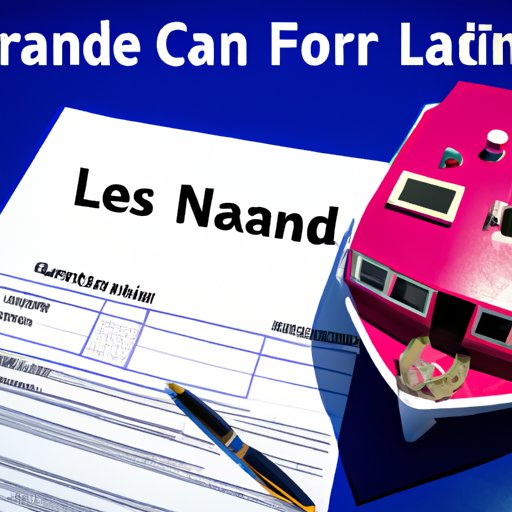Introduction
Boat financing is a type of loan used to purchase a boat or other watercraft. It is similar to a car loan or mortgage in that you borrow money from a lender and make payments over time. The main difference between boat financing and other types of financing is that boats tend to depreciate in value much faster than cars or homes. This means that you may end up owing more than the boat is worth if you don’t make your payments on time.
Before deciding whether boat financing is right for you, it’s important to understand the pros and cons associated with this type of loan. On the plus side, boat financing can help you purchase the boat of your dreams without having to pay for it in full upfront. It also allows you to spread the cost of the boat over a longer period of time, making it easier to manage your budget. However, boat financing also has its drawbacks, including high interest rates and the possibility of owing more than the boat is worth.
Qualifying for Boat Financing
When applying for boat financing, lenders will look at several factors to determine if you are a good candidate for the loan. Your credit score plays an important role in qualifying for boat financing, as lenders typically require a minimum score of 660. Additionally, lenders will review your income, assets, and debt-to-income ratio to ensure you can afford the loan payments.
In addition to these requirements, you will also need to provide documents such as proof of identity, proof of income, and proof of insurance. Depending on the lender, you may also need to submit additional paperwork, such as a bank statement or tax return.

Different Types of Boat Financing Options
When looking for boat financing, there are several different options available. The most common type of loan is a traditional loan, which is secured by the boat itself. Traditional loans usually offer lower interest rates compared to other types of financing, but they may also require a down payment of 20 percent or more.
Leases are another option for boat financing. This type of loan allows you to borrow the boat for a fixed period of time, usually two to five years. At the end of the lease, you can either return the boat or purchase it outright. Leases typically have higher monthly payments than traditional loans, but they may be a good option for those who want to test out a boat before committing to ownership.
Finally, owner financing is another option for boat financing. This type of loan involves borrowing money directly from the boat’s owner, rather than from a bank or other lender. Owner financing can often be more flexible than traditional loans, as the terms and conditions are negotiated between the buyer and seller. However, it’s important to understand the risks associated with owner financing before entering into this type of agreement.
Researching Boat Financing Rates
When shopping for boat financing, it’s important to research rates from various lenders. You can compare rates online or work with a broker who can shop around for the best deal. Be sure to read the fine print of any loan agreement to make sure you understand the terms and conditions before signing on the dotted line.
It’s also important to consider fees and other costs associated with boat financing. These may include application fees, origination fees, prepayment penalties, and late payment fees. Make sure you understand all of the fees and costs associated with the loan before agreeing to the terms.
Length of Time Required to Secure Boat Financing
The amount of time it takes to secure boat financing depends on several factors, including the type of loan you’re applying for and the lender you’re working with. Generally speaking, traditional loans take the longest to process, while leases and owner financing may be approved more quickly.
Additionally, the amount of paperwork required and the complexity of the loan can also affect the length of time it takes to secure boat financing. As such, it’s important to prepare all of the necessary documents in advance to expedite the process.

Tips on Finding the Right Boat Financing Lender
When looking for boat financing, it’s important to do your research to find the right lender. Start by reading customer reviews to get a better understanding of the lender’s reputation. Additionally, consider the fees and penalties associated with the loan, and ask questions about the terms and conditions.
It’s also important to compare rates from different lenders. Once you’ve gathered quotes from several lenders, you can compare the offers and negotiate the terms to get the best deal. Be sure to read the fine print carefully to understand the details of the loan before signing.
Conclusion
Boat financing can be a great way to purchase the boat of your dreams without having to pay for it in full upfront. However, it’s important to understand the pros and cons associated with boat financing, as well as the qualifications required to secure a loan. Additionally, it’s important to research boat financing rates and compare lenders to get the best deal.
By doing your homework and taking the time to understand the details of boat financing, you can ensure that you get the best loan for your needs. For more information, be sure to consult with a financial advisor or bank representative.
(Note: Is this article not meeting your expectations? Do you have knowledge or insights to share? Unlock new opportunities and expand your reach by joining our authors team. Click Registration to join us and share your expertise with our readers.)
